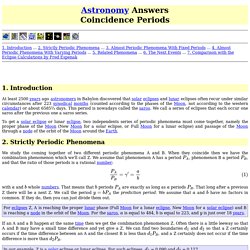

Wikiverse: a galactic reimagining of Wikipedia. Astronomers Just Identified Another Important Aspect of Planets That Could Host Life. We are, by now, pretty familiar with the concept of the Goldilocks zone.

Also known as the habitable zone, it's the distance from a star at which liquid water can be present on the surface on a planet - not so hot as to be vaporised, nor so cold as to be frozen. These conditions matter because we count liquid water as a vital ingredient for life. But it's not the only criterion that can help us to assess a planet's potential habitability; according to new research based on decades of data, there are also Goldilocks stars. Not all stars, you see, are built alike. Some are extremely hot and bright - such as the very young, blazing blue OB stars. Our Sun sits between these two extremes, what is known as a yellow dwarf - a G-type main-sequence star.
Nope. Mars's Water Is Evaporating Away Even Faster Than We Expected. Billions of years ago, Mars could have been a planet very like Earth with copious liquid water on its surface.

But over time, that water rose into Mars’s thin atmosphere and evaporated off into space. There are only very small amounts of water vapor left in the atmosphere today, and a new study shows that vapor is being lost even faster than previously believed. The research, published in the journal Science, used data from the Trace Gas Orbiter in orbit around Mars to see how water moved up and down through the layers of the Martian atmosphere in order to understand how fast it evaporates away.
They found that the vapor changes through the seasons and that in the warmer months the atmosphere hosts a whole lot more water than expected, in a state called “supersaturation.” When the atmosphere becomes supersaturated, this makes the evaporation of water happen even faster. This could mean that planned manned missions to Mars will be more difficult.
Editors' Recommendations. Astronomers Do It In The Dark - astrophotography, astronomical photos, astronomical photography, astro photos, astro photography, Dark Nebulae, IC Nebulae, Reflection Nebulae, Open Clusters, Abell Galaxies, Spiral Galaxies, Galaxy Clusters, Planetary Nebu.
Pinpoints equinox, solstice and cross quarter moments throughout the year. Astronomy Answers: Eclipses and the Saros. 1.

Lunar Eclipses A lunar eclipse occurs when the Moon passes through the shadow of the Earth. For more basic information about lunar eclipses, see the Eclipses Page from the AstronomyAnswerBook. If the Moon stands opposite the Sun in the sky then it is Full Moon. If there is a lunar eclipse, then the Moon goes through the shadow of the Earth, which is directly opposite the Sun, so it has to be Full Moon when there is a lunar eclipse. There is only a lunar eclipse if the Moon, when it is full, is also close enough to the ecliptic. There are on average 29.530588 days between a Full Moon and the next Full Moon, and on average 13.606111 days between one passage through a node of the Moon's orbit and the next one.
It turns out that 223 synodical months is nearly equal to 242 draconic months, namely both almost equal to 6585 1/3 days or about 18 years and 11 days. During a lunar eclipse, the Moon gets dark, and everyone who can see the Moon then can see the lunar eclipse. 2. 2.1. Astronomy Answers: Coincidence Periods. Loading [MathJax]/jax/output/CommonHTML/fonts/TeX/fontdata.js 1.

Introduction At least 2500 years ago astronomers in Babylon discovered that solareclipses and lunar eclipses often recur under similar circumstances after 223 synodical months (counted according to the phases of the Moon, not according to the western calendar) or about 6585⅓ days. This period is nowadays called the saros. We call a series of eclipses that each occur one saros after the previous one a saros series. Astrology-sepharial. The Importance of Yods in Astrology. A “yod” is an aspect pattern that some astrologers use.

It involves two planets in a close sextile (60°), with a third planet ‘quincunx’ (150°) to both of the planets in sextile. Click here to view a full-sized diagram of a yod. The truth about yods is that they aren’t terribly important, or at least not as much as they are made out to be by some people. In fact, I would go so far as to say that the yod is one of the most over-hyped configurations in astrology, at least relative to its actual merit. Yods are often given all sorts of lofty sounding titles, like “the finger of god”, or “the finger of fate”. Physics Bowl. Systemic. WorldWide. Effervesce.
Percolate. Reminisce. Time Well Spent. Eternity. ASTRO.Logic.